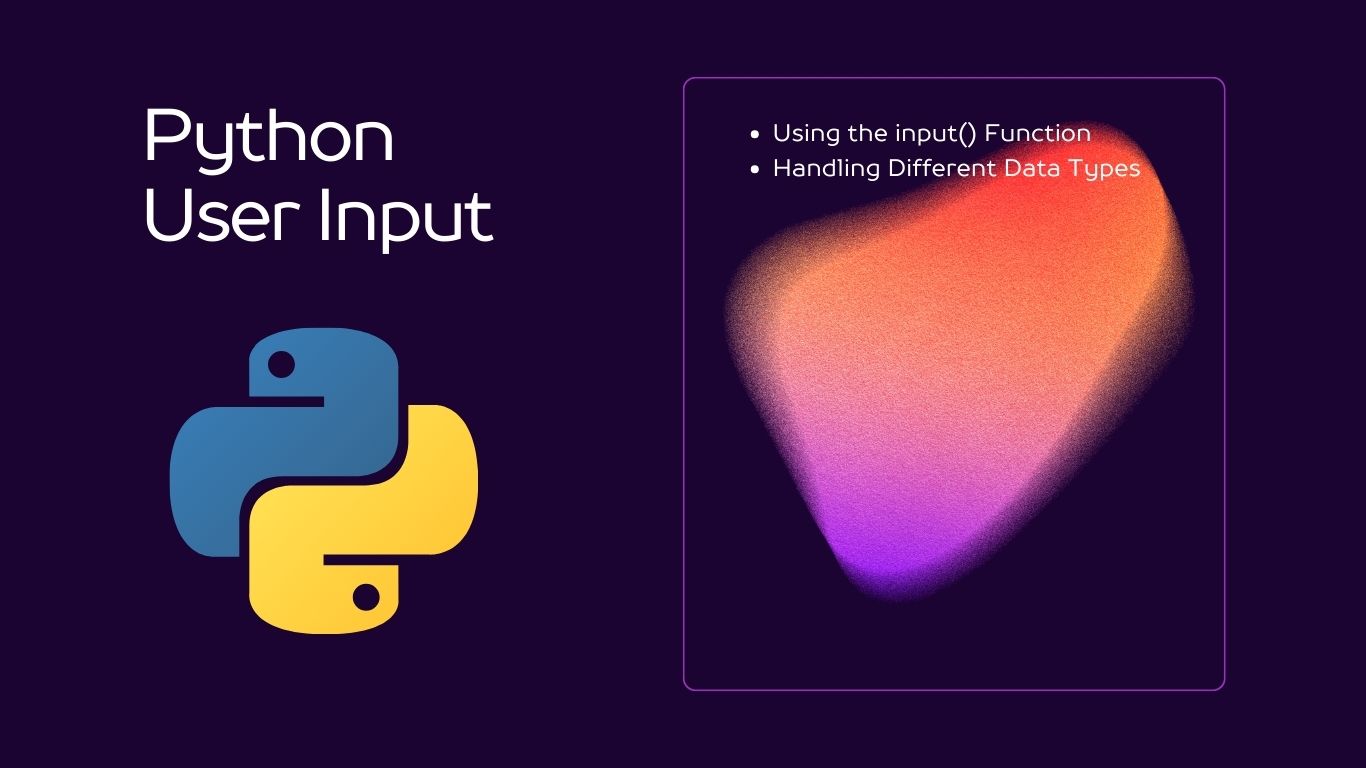Programming is all about making computers do what you want them to do. One essential in python is to receive python User input. Whether you want to create a simple calculator, a game, or a complex data analysis tool, you’ll often need to interact with users to collect information. In Python, the process of receiving input from the user is straightforward. In this tutorial, we will cover the basics of receiving user input in Python, including using the input() function, handling different data types, and validating user input.

Table of Contents
Using the Python User input() Function
The input() function allows you to read a line of text from the user. Here’s a basic example:
name = input("Enter your name: ")
print("Hello, " + name + "!")
Explanation:
- We use the
input()function to prompt the user to enter their name. The string"Enter your name: "serves as the prompt. - Whatever the user enters is stored in the variable
name. - We then use
print()to display a message that includes the user’s input.
Output:
If the user enters “Alice,” the output will be:
Enter your name: Alice
Hello, Alice!

Handling Different Data Types
By default, input() reads input as a string. If you want to receive numbers as input, you need to convert the input to the appropriate data type. Here’s an example:
age = input("Enter your age: ")
age = int(age) # Convert input to an integer
print("You will be " + str(age + 1) + " years old next year.")
Explanation:
- We use
input()to get the user’s age as a string. - We then use
int(age)to convert the string to an integer so that we can perform arithmetic operations on it. - Finally, we print the user’s age for the next year.
Output:
If the user enters “25,” the output will be:
Enter your age: 25
You will be 26 years old next year.
Conclusion:
Receiving user input is a fundamental skill in programming. In Python, the input() function makes it easy to interact with users and collect data. Remember to handle different data types and validate input to create robust and user-friendly programs.




